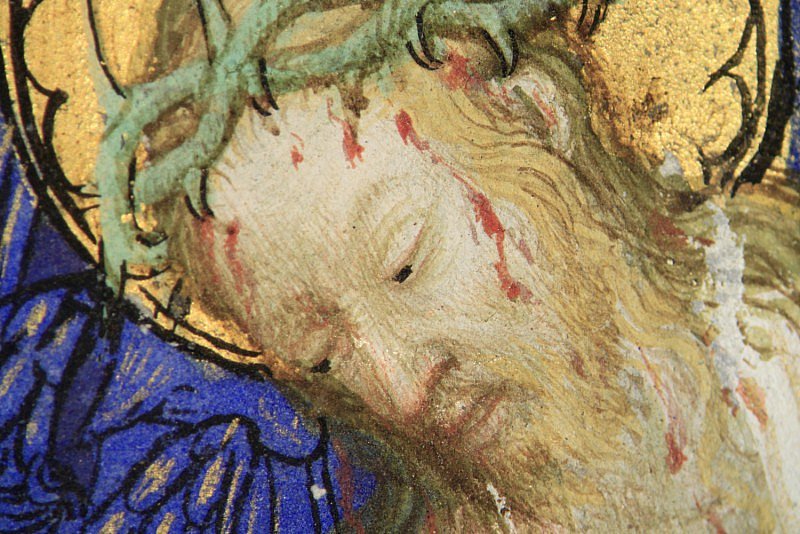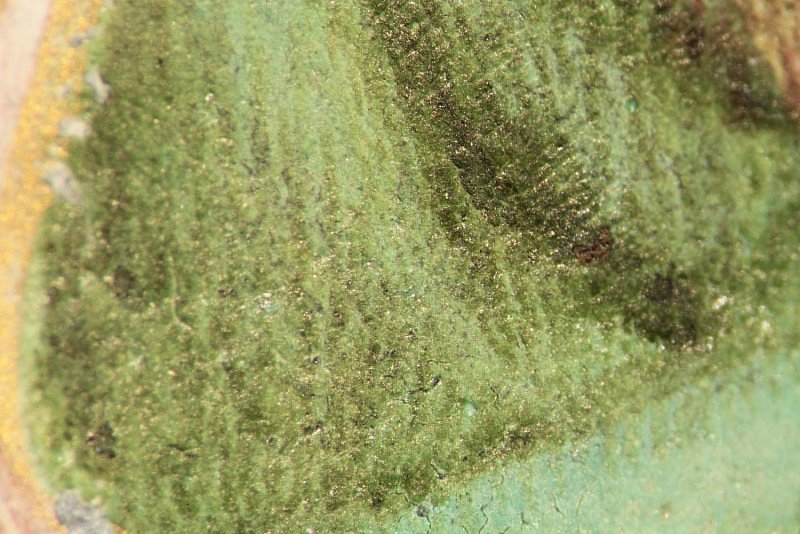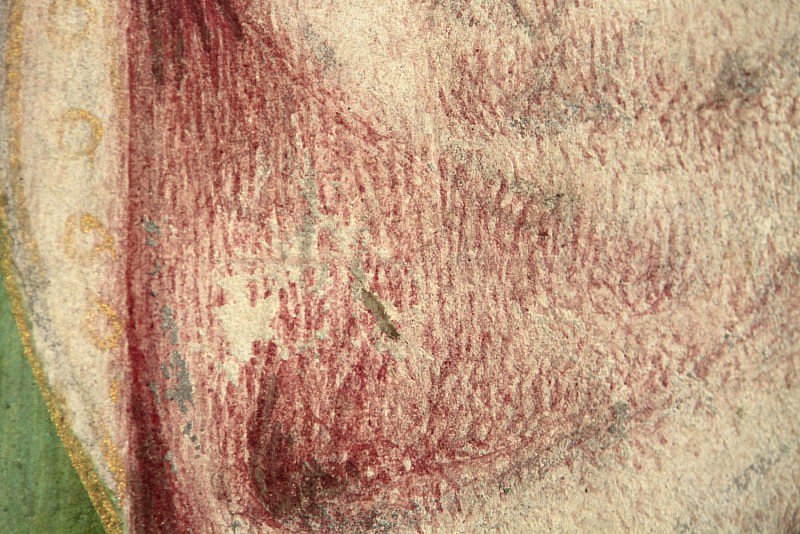Painting the flesh
Artists' Techniques
In flesh areas, a thin grey wash was laid down as an under-layer. An even pink base, a mixture of lead white, red earth and vermilion, was applied next. The main facial features, the nose, mouth and eyes, were outlined with brown, iron-based ink, and highlighted in an organic red pigment. The eyes were further defined with small black dots.
The same brown ink and red pigment were used to model the skin texture with vertical strokes. They were either used sparingly to create youthful, porcelain-smooth complexions or laid down in a dense pattern, resulting in the ruddy faces of older men. Greenish-brown earth was used for shaded areas and lead white for highlights. Finally, a thick impasto of lead white was applied to simulate the texture of bushy eyebrows and in some cases to provide highlights on the cheeks.
Despite general similarities, the work of different artists can be distinguished in the magnified images captured with an optical microscope, by slight differences in the way they blended the paint layers, outlined facial features, and shaped faces, eyes, noses and lips.



Last Judgement (Seven Requests to our Lord)
This miniature displays the salient features of the Rohan Master’s style: the juxtaposition of super-large and extra-small, Christ’s facial type (hotspot 1) and skeletal frame, and the background angels highlighted in gold ink. The idiosyncratic underdrawing is visible to the naked eye through the thin pink washes on Christ’s drapery. Infrared imaging clearly reveals the festoons of loops cascading down or congregating into pools of drapery folds (see Infrared Layer). On the surface, the folds and shadows are defined by thin parallel strokes of dark green and pink over the lighter green and white base layers (hotspots 2 and 3).
